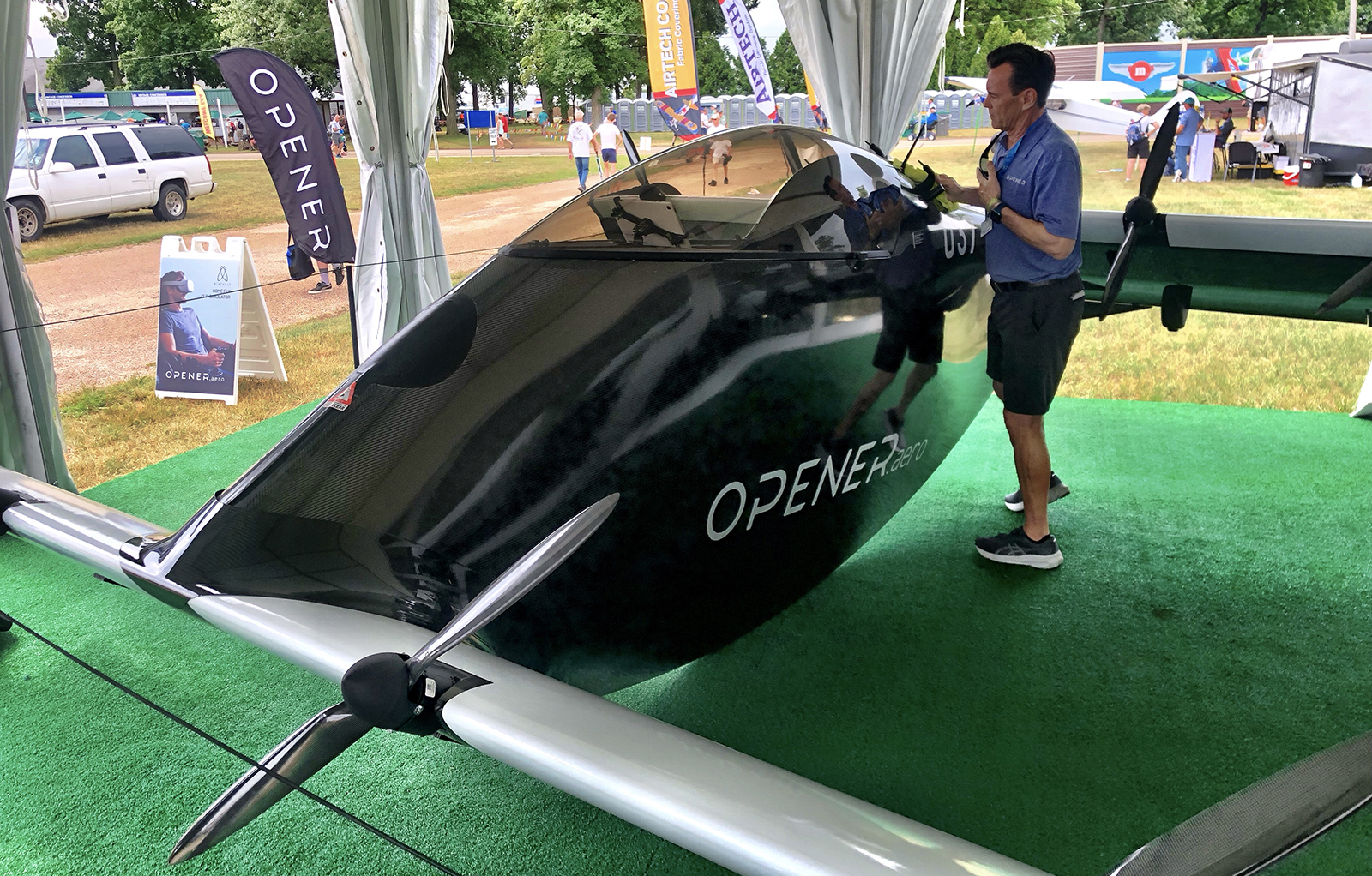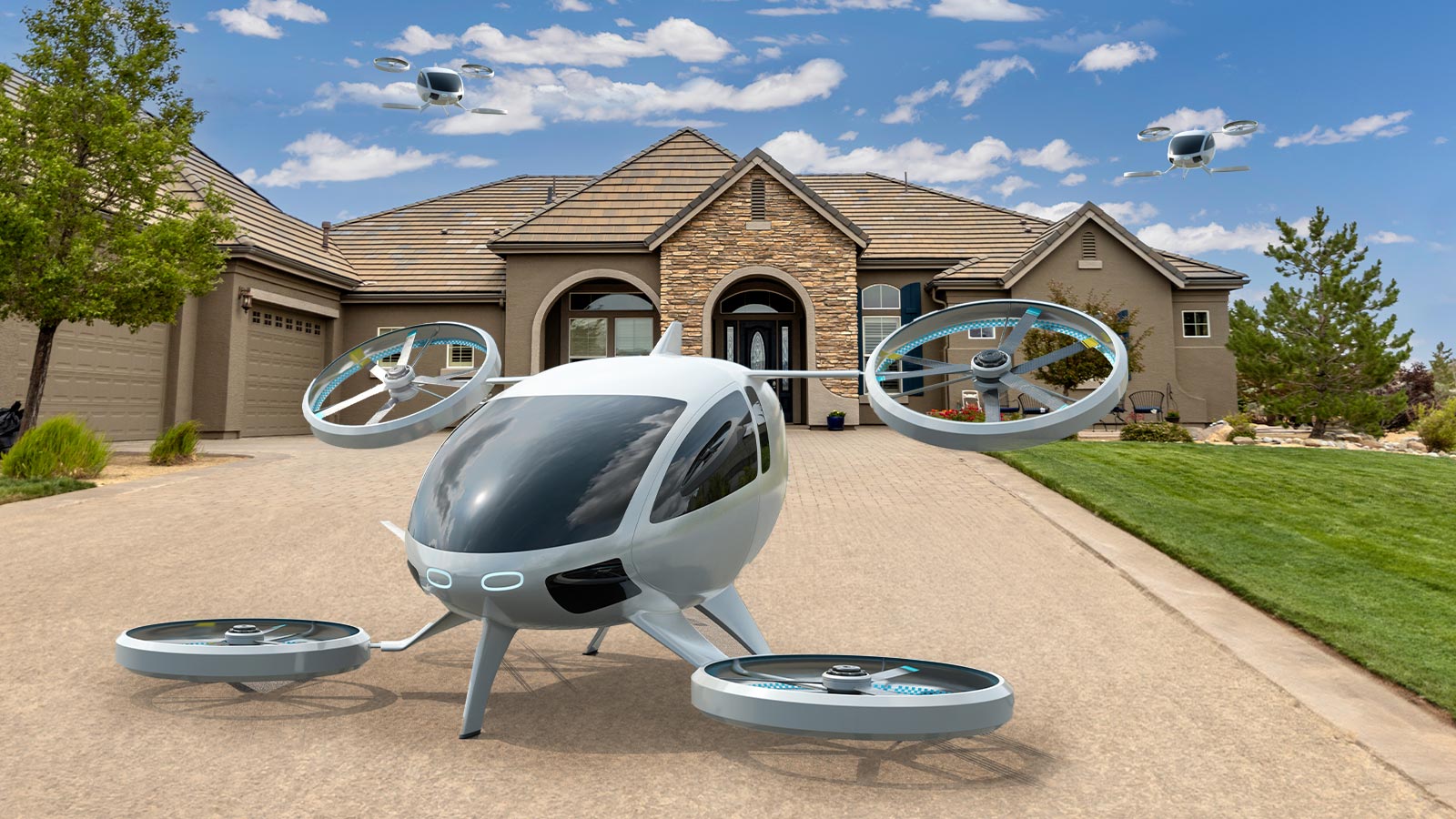Stay Up to Date
Submit your email address to receive the latest industry and Aerospace America news.
Those electric air taxis we hear so much about could turn out to be a stepping stone to a transportation revolution that will change where and how we live and maybe help clean up the planet. Futurist Dennis M. Bushnell explains.
Dennis M. Bushnell retired from NASA in June after a 60-year career at the agency, the last 28 as chief scientist of Langley Research Center in Virginia. Bushnell is a futurist and AIAA honorary fellow.
History shows that when we change our technology, our technology changes us.
Automobiles were at first a curiosity for the wealthy, and yet within two decades they had all but replaced horses, carriages and walking as the primary means of local transportation. Likewise, the first aircraft were novelties, followed by warfighting tools. But then high-subsonic-speed passenger aircraft were introduced in the 1950s, and these jets quickly eclipsed railroads and ships as the primary means of long-range travel. In fact, in my lifetime, air transportation has grown into an $800 billion-plus market, with a service footprint spanning most of the globe.
Toward the end of my six-decade career at NASA, I witnessed the sowing of the seeds of the next transportation revolution. At least 14 companies in the United States, and others abroad, are developing all-electric aircraft capable of carrying one or two people. Today, these personal air vehicles are a small part of an advanced air mobility movement dominated by startups flying prototypes of all-electric air taxis. The evidence posits that these PAVs will ultimately rise to dominate the AAM market and deliver societal impacts even more profound than those of air taxis, automobiles and airliners. In short, PAVs will ultimately propel us into a new age in which we can live where we want and travel where we want with far greater ease and less environmental impact.
One reason for my confidence is that the desire for personal transportation is rooted in our history. PAVs have been a dream for more than a century, even if people did not call them that. The patent that Orville and Wilbur Wright filed in March 1903 for a one-person “Wright Flying Machine” could arguably be described as a PAV. Flash forward to 1940, and Henry Ford famously predicted, “Mark my word: a combination airplane and motorcar is coming. You may smile, but it will come.” He seemed to be proven correct when, in the late 1940s, an engineer named Moulton “Molt” Taylor crafted the Aerocar. This “roadable” aircraft, as it was called, had foldable wings and could be readied for flight in 15 minutes. While demonstration flights were successful, the Aerocar never revolutionized personal transportation. There was the understandable requirement that the operator be a pilot and the reality that not many people have the time or money to become a pilot. On top of that was a bevy of technological shortfalls. It all added up to unaffordability.

Now, however, existing and nascent technologies have rejuvenated the outlook for PAVs, whether roadable “flying car” versions reminiscent of the Aerocar or electric vertical takeoff and landing versions that would operate from driveways, rooftops or yards. If PAV designers are not already doing so, they will be able to seize on the improvements in information technology, electric power storage and other technologies driven largely by the 800 eVTOL designs now in development, to use a figure reported by the Vertical Flight Society.
Let’s look first at IT. Whereas there was once an absolute requirement for a human pilot aboard the aircraft, that is no longer the case. The CIA and U.S. military pioneered the use of unmanned air vehicles two decades ago and flew these remotely piloted aircraft, or drones, to great effect in the wars in Afghanistan and Iraq. In the civilian world, air taxi developers now regularly dispatch prototypes on test flights without onboard pilots or passengers. These robotic technologies with their pre-scripted automation nevertheless pointed the way toward fully autonomous flight, which is inevitable given the rise of machine learning and artificial intelligence. In a sense, PAVs can be viewed as UAVs that will carry human passengers.
Air traffic management remains the major pacing item for this revolution, given the raw numbers of PAVs that would have to be airborne: tens of millions versus the current tens of thousands. With such a scope, regulators will need to shift away from today’s largely manual system in which pilots must be aboard aircraft and air traffic controllers must give them commands. The crux enabler will be an autonomous and artificially intelligent ATM system working in real time in concert with autonomous software onboard the PAVs. Such a system is currently wholly nascent. Its primary purpose will be to avoid collisions, and this will be no easy task, given that PAVs will be popping up all over the place and flying to seemingly random destinations. This reality presents a very dynamic N-body problem, the physicist’s term for predicting the motions of particles or celestial objects as they interact with one another.
Traffic lanes in the sky could prove to be a good way to keep this situation from degenerating into Brownian motion, the random and unpredictable movement of objects like the pollen particles Scottish botanist Robert Brown viewed under a microscope in the 19th century. Airspeed and direction would have to be controlled for each vehicle, based on a constantly changing optimization problem. Only computing machines operating as a system of systems could perform this control of tens of millions of vehicles operating in close proximity to one another. A worrisome challenge will be the latency of signals to the control effectors and speed brakes on the vehicles. Thrust vectoring and reverse thrusters, especially via utilization of the components of electric distributed propulsion, would be needed to provide additional vehicle controllability. Aerodynamic flow control could be incorporated into the PAVs to help ensure they could keep flying through avoidance maneuvers. This flow control could also aid the vertical lift capability.

How might such a reconceived ATM system be developed? A digital simulation could be constructed around the current ATM system to extract training data and enable the machine learning critical to developing effective AI. This could be done with safeguards to prevent interference with ongoing ATM operations. The required ATM components could then be developed individually and as a system of systems in the simulation. This system of systems could then be taken to the desert and its effectiveness proven through rigorous experimentation. In this way, a new and separate ATM system could be devised without replacing the current system. NASA would be FAA’s technical research partner for the endeavor. The result would be a mature system suitable for the vast number of aircraft that will be in the air in the PAV revolution.
With the ATM in place, we will begin to see the societal impacts of mass-produced PAVs operating safely and quietly from driveways and streets. PAVs will travel faster than cars, buses or trains, so when we do need to commute or travel regionally, we’ll be able to go farther in less time. PAVs will begin to encroach on scheduled domestic air travel. There will be reduced carnage on the roads. Less money will be needed to maintain or build roads and bridges. The urban heat island effect will be reduced, as some roads are converted back to nature. Our carbon footprint will shrink.
Some of us will choose to live in rural locations without roads in what will be a throwback to the era when most of us lived on farms. The industrial age required factory workers, which necessitated that they live in close proximity to factories. The resulting requisite population density led to the expansion of cities and urban areas and, later, the automobile-enabled suburbs. In that process, many lost the time and the land area for serious do-it-yourself living and associated independence.
As we move out of the industrial age into the virtual age, we will return to effective do-it-yourself independent living. With tele-everything, people can — and some do now — live wherever they want, such as on mountaintop acreage. Massive and ever less expensive renewable energy developments will enable distributed electricity generation and storage. This will enable modern life in remote locations and obviate the need for wires to deliver electricity. Massive numbers of low-Earth-orbiting satellites will provide worldwide high-speed internet. Artificial intelligence will keep spacecraft from colliding and polluting orbits. Competition will keep internet prices low. With a matching bio revolution, it will become possible to grow significant amounts of food on a small holding, where water would be drilled for, captured from rain and recycled.
PAVs will be the linchpin for all of this. They will have freed most of us from any kind of grid at all, whether electrical, road, water or internet. It is a nascent revolution, but one that is real.
Related Posts
Stay Up to Date
Submit your email address to receive the latest industry and Aerospace America news.




